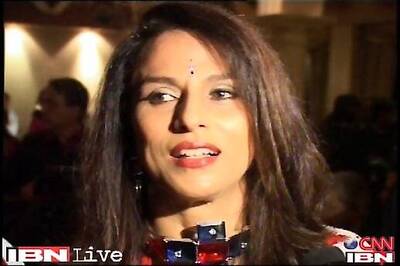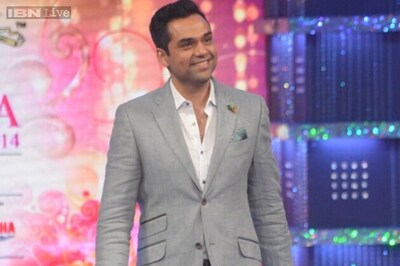
views
During the election heat in the largest democracy of the world, a few videos went viral on social media. A video of a flash mob of some NRIs wearing ‘NaMo Again’ T-shirts, dancing and waving the Indian flag in a UK city made people back in India feel proud of them.
A few other videos of bike and car rallies, weekend discussions called ‘Chai Pe Charcha’ at commercial hubs of American cities like World Coca Cola Centre and Times Square, ‘Run for Modi’ in the UK to creation of groups like ‘NRIs For NaMo’ have caught everyone’s fancy.
Thousands of people who could not come for ground campaigning, chose to support Modi from their places through social media and by making campaign calls.
All this is unprecedented in the Indian political history. Although the Indian diaspora had supported Prime Minister Narendra Modi ahead of the 2014 general election, but this time, the campaign reached an altogether different pitch.
A large number of professionals across the world have worked voluntarily, spending their own money, time and resources to support Modi in getting a second term.
This support in a general election is a manifestation of the euphoric presence of overseas Indians at Modi’s programmes at Madison Square to Sydney Opera House to Dubai Cricket Stadium and other places.
It all began with Modi’s sustained engagement with the forgotten sons and daughters of India. Here was a Prime Minister who made them feel that the Indian government at ‘home’ cared for them, which was exhibited through quick action on stranded Indians and simplified laws related to non-resident Indians (NRIs) and persons of Indian origin (PIOs).
It seemed to promise cultural and emotional moorings to the Indians who were treated as an extended family, unlike any other government since independence.
This was contrary to Jawaharlal Nehru’s comment on the Indian diaspora that they were politically dissociated from India. For decades, brain drain was termed as one of the reasons for under-development of India.
Modi redefined relationship with around 30-million strong diaspora consisting of 15 million NRIs and PIOs each. He not only interacted with the rich and famous in Europe and US, but also mingled with the Indian labour force in the UAE, Mauritius and Trinidad with equal warmth and connect.
The latter was too touched by the fact that for the first time, an Indian Prime Minister had met them and enquired about their working conditions. In the UAE, he instilled pride in Indians by highlighting their contribution to the UAE workforce and India’s remittances.
The diaspora realised that here was a powerful leader who was responsible for India’s image makeover. Here was a man who was unapologetic of his belief and flaunted Indianness at every occasion. He kept a fast during navratri while on a visit to the US and gifted Bhagwad Gita to diplomats.
They also saw a unifier in Modi who believed in ‘sabka sath sabka vikas’. He had the calibre and will-power to change the image and status of India from a poor developing country to the one which feels proud in its cultural inheritance and had the potential to become a 'vishvaguru'.
The country that had denied Narendra Modi a visa for a long time gave him a red-carpet welcome. India gained in diplomacy. The value of Indian passport has gone up in the last five years.
India’s profile has upgraded which got manifested in celebration of International Yoga Day by the UN to the building of a grand temple in Dubai.
Modi exhorted overseas Indians to come and be stakeholders in India’s progress and future. He called them to take part in ‘Make in India’ and start-up programmes for which many sops were also announced.
He defined foreign direct investment (FDI) for them as ‘first develop India’.
A serious effort has been made to convert brain drain to brain gain. The intellectual and financial capital of the untapped force is being utilised.
This force has got the inspiration to proudly be the brand ambassadors of India’s foreign policy in their adopted lands.
The Modi-factor has also unified the sections of Indian diaspora as now they are united in the idea of welfare of their original country along with their loyalties to their adopted nations.
The vision of a New India has resonated with this credible force called Indian diaspora as it is not region or class or caste specific but India as a unified whole. And who else but diaspora can better see India as an organic whole?
No wonder that the great unifier Modi has been termed as the Divider-in-Chief on the cover of the Times Magazine.
The hostility of the media and academia of American and European countries is understandable as they would not like the idea of India emerging as a reckoning power and a fast-growing economy.
It is also perceivable that the emergence of a culturally powerful India also means a strong re-positioning of Hinduism in the West, which they would not like to happen.
(The author teaches at Ram Lal Anand College, University of Delhi. Views are personal)


















Comments
0 comment